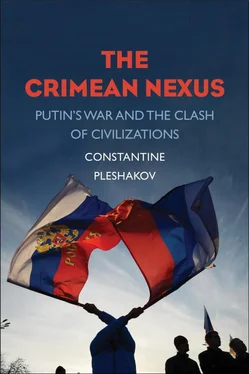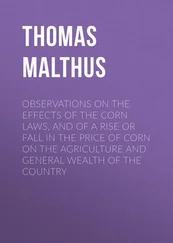For Tatars, that meant nation-building within the Crimean Autonomous Soviet Socialist Republic. The republic was not defined as “Tatar” because they made up only 25 percent of the population (Crimea was 50 percent Russian and Ukrainian; Jews, Greeks, Armenians, Bulgarians, Germans and others accounted for the remaining 25 percent). [56] Williams, The Crimean Tatars , 350.
Yet according to the historian Brian G. Williams, “For all intents and purposes, the Crimean ASSR was, from 1921–1945, established as an unofficial Crimean Tatar republic and the Crimean Tatars were the state-sponsored ‘native people.’” Among other progressive achievements was the establishment of universal education in the Tatar language. In 1917, only 17 percent of Tatar girls were enrolled in schools; by 1928, 44.9 percent were. On the destructive side, collectivization, political purges, and, finally, the surreal Great Terror of 1937–1939 hit Tatars as badly as every other group in Crimea. As the Soviet elites were abandoning Marxist cosmopolitanism in favor of pan-Slavic nationalism, the Arabic script that Tatars had traditionally used got changed first to Latin and then, doubling the confusion, into Cyrillic. Planned as a mechanism of reeducation, the change cut off younger people from their heritage. [57] Ibid., 337, 355–356; Greta Lynn Uehling, Beyond Memory: The Crimean Tatars’ Deportation and Return (New York: Palgrave, 2004), 37.
When Hitler planned the invasion of the Soviet Union and the future disposition of its territories, he gave Crimea a special place. The Crimean mountains had been populated by Germanic Goths, and according to the Nazis’ research, these Goths were closely related to the Germans living in South Tyrol. This meant, first, that Germans of South Tyrol would be “repatriated” to Crimea after the war, and second, that Tatars of the Crimean mountains would be spared the horrors of racial cleansing because of the possibility that under the veneer of Islamic culture there pulsed noble Aryan blood. After the war, Crimea was to be renamed Gotenland. Simferopol would become Gotenburg, and Sevastopol would be Theodorichhafen. The peninsula would become the southernmost Germanic land, the Nazi Riviera. [58] Fisher, The Crimean Tatars , 152.
The German Eleventh Army took Perekop on October 21, 1941. Two and a half years of German occupation followed. [59] Gottlob Herbert Bidermann, In Deadly Combat: A German Soldier’s Memoir of the Eastern Front (Lawrence: University Press of Kansas, 2000), 89–144; Karl Doenitz, Memoirs: Ten Years and Twenty Days (Annapolis, Md.: Naval Institute Press, 1990), 385–388; Manstein, Lost Victories , 204–259.
Persistently blind to opportunities for collaboration with the anti-Soviet Russians and Ukrainians, Hitler found collaboration with Muslim peoples ideologically permissible. Tragically, as they had done in 1918, Tatar nationalist activists once again gambled their people’s future on an alliance with the wrong side. This mistake was not unique among national liberation movements: Irish nationalists had sided with Germany in World War I.
Out of a population of 218,000, 20,000 Tatars served in the Red Army. Another 20,000 joined “self-defense battalions” directed by the German occupation forces, with the primary mission of hunting down resistance guerrillas in the mountains (at least 20 percent of these guerrillas were Tatars). During the years of occupation, German punitive squads eliminated up to 130,000 Crimean civilians and resistance fighters, including 40,000 Jews; Tatar self-defense units are known to have participated in several massacres. [60] Fisher, The Crimean Tatars , 155–156; Williams, The Crimean Tatars , 376–380; V. E. Potekhin and D. V. Potekhin, Kultura narodov Kryma (Sevastopol, 1997), 17.
Historians sympathetic to the Crimean Tatars do not fail to note that a very significant number of Crimean Russians and Ukrainians collaborated with the German occupying force too, both in local administration and volunteer punitive units. Survivors of the occupation have confirmed that. The real dividing line between Tatars and Slavs during the war was not political but economic: Germans let Tatars establish a governing network of so-called Muslim Committees. These committees had very limited functions, such as expanding religious services and establishing a national newspaper and a theater; the most important was the opportunity to regulate economic life in Tatar neighborhoods—an enormous benefit in wartime. Compared with the hand-to-mouth existence of the surviving Slavs, the Tatars’ condition of regulated and collective poverty looked like riches. [61] Fisher, The Crimean Tatars , 157–158.
Once the Red Army returned to the peninsula in May 1944, Stalin ordered every single Tatar deported. They were accused of blanket treason and exiled—in all, about 200,000 people—to Uzbekistan in Central Asia, to spend forty years in a land foreign to them. Other minorities were also kicked out without any explanation: 10,016 Armenians, 12,075 Bulgarians, 14,368 Greeks. All of the 60,000 Crimean Germans had been deported shortly after the war started in 1941. Stalin had decided to make Crimea homogenously Slavic. [62] Anne Applebaum, Gulag: A History (New York: Doubleday, 2003), 428; Williams, The Crimean Tatars , 405; Potekhin and Potekhin, Kultura narodov Kryma , 4–13.
What the participants in the Yalta Conference saw ten months later, in February 1945, was a grim, depopulated territory, with Red Army troops lining the roads for heightened security. For many American and British participants, this was their first visit to a territory devastated by war, and they were shocked: “We saw burned-out freight trains, burned-out tanks, and other damaged materiel,” Edward R. Stettinius remembered. According to Charles E. Bohlen, the “wreckage Roosevelt saw on the drive hardened his view on Germany. ‘I’m more bloodthirsty than a year ago,’ he told Stalin when they met.” Churchill called Crimea “The Riviera of Hades.” [63] Stettinius, Roosevelt and the Russians , 81; Charles E. Bohlen, Witness to History, 1929–1969 (New York: Norton, 1973), 173; Mary Soames, ed., Winston and Clementine: The Personal Letters of the Churchills (Boston: Houghton Mifflin, 1999), 510.
The Kremlin briefly considered creating a Jewish autonomous republic in Crimea, a “Jewish California,” an idea already floated in the 1920s. But anti-Semitism, submerged in the 1920s and 1930s, became an official policy of late Stalinism. It was decided that all new settlers would be Ukrainian and Russian. [64] Simon Sebag Montefiore, Stalin: The Court of the Red Tsar (New York: Alfred A. Knopf, 2004), 546.
The majority came from the provinces devastated by war: Russians from the Voronezh, Briansk, Kursk, and Rostov regions; Ukrainians from Kiev, Chernigov, Poltava, and Kamenetz-Podolsk. After the war, 90 percent of the people in Crimea were newcomers. Within a few years, the look of the place had changed. It had become poorer, wanting, confused. [65] S. M. Chervonnaya, Tiurkskii mir yugo-vostochnoi Evropy. Krym—Severnyi Kavkaz (Berlin: Das Arabische Buch, 2000), 77; Williams, The Crimean Tatars , 405.
Crimea’s history became subject to Slavic revisionism, both Russian and Ukrainian. Both celebrated Crimea as part of “Slavdom,” a province of the Kievan Rus’. Most mosques were destroyed, with a few historic ones in tourist centers kept as museums. Agriculture in the mountains was abandoned as too strenuous for Slavs. Tatar villages were razed, leaving abandoned fruit gardens, or chaeers , as the only reminders of their occupants’ very recent presence. Except for some well-known geographical features, such as capes and mountaintops, Turkic toponyms were either translated into Russian or replaced by something utterly Soviet or distastefully generic. [66] Williams, The Crimean Tatars , 32.
Читать дальше












